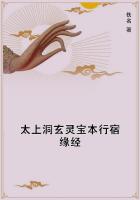Tariff bars, it is true, had not been able to prevent the rapid growth of trade; imports from the United States to Canada had grown especially fast and Canada now ranked third in the list of the Republic's customers.Yet in many ways the tariff hindered free intercourse.Though every dictate of self-interest and good sense demanded a reduction of duties, Canada would not and did not take the initiative.Time and again she had sought reciprocity, only to have her proposals rejected, often with contemptuous indifference.When Sir Wilfrid Laurier announced in 1900 that there would be no more pilgrimages to Washington, he voiced the almost unanimous opinion of a people whose pride had been hurt by repeated rebuffs.
Meanwhile protectionist sentiment had grown stronger in Canada.
The opening of the West had given an expanding market for eastern factories and had seemingly justified the National Policy.The Liberals, the traditional upholders of freer trade, after some initial redemptions of their pledges, had compromised with the manufacturing interests.The Conservatives, still more protectionist in temper, voiced in Parliament little criticism of this policy, and the free trade elements among the farmers were as yet unorganized and inarticulate.Signs of this protectionist revival, which had in it, as in the seventies, an element of nationalism, were many.A four-story tariff was erected.The lowest rates were those granted the United Kingdom; then came the intermediate tariff, for the products of countries giving Canada special terms; next the general tariff; and, finally, the surtax for use against powers discriminating in any special degree against the Dominion.The provinces one by one forbade the export of pulp wood cut on Crown Lands, in order to assure its manufacture into wood pulp or paper in Canada.The Dominion in 1907 secured the abrogation of the postal convention made with the United States in 1875 providing for the reciprocal free distribution of second class mail matter originating in the other country.This step was taken at the instance of Canadian manufacturers, alarmed at the effect of the advertising pages of United States magazines in directing trade across the line.Yet even with such developments, the Canadian tariff remained lower than its neighbor's.
In the United States the tendency was in the other direction.
With the growth of cities, the interests of the consumers of foods outweighed the influence of the producers.Manufacturers in many cases had reached the export stage, where foreign markets, cheap food, and cheap raw materials were more necessary than a protected home market.The "muckrakers" were at the height of their activity; and the tariff, as one instrument of corruption and privilege, was suffering with the popular condemnation of all big interests.United States newspapers were eager for free wood pulp and cheaper paper, just as Canadian newspapers defended the policy of checking export.It was not surprising, therefore, that reciprocity with Canada, as one means of increasing trade and reducing the tariff, took on new popularity.New England was the chief seat of the movement, with Henry M.Whitney and Eugene N.
Foss as its most persistent advocates.Detroit, Chicago, St.
Paul, and other border cities were also active.
Official action soon followed this unofficial campaign.Curiously enough, it came as an unexpected by-product of a further experiment in protection, the Payne-Aldrich tariff.For the first time in the experience of the United States this tariff incorporated the principle of minimum and maximum schedules.The maximum rates, fixed at twenty-five per cent ad valorem above the normal or minimum rates, were to be enforced upon the goods of any country which had not, before March 10, 1910, satisfied the President that it did not discriminate against the products of the United States.One by one the various nations demonstrated this to President Taft's satisfaction or with wry faces made the readjustments necessary.At last Canada alone remained.The United States conceded that the preference to the United Kingdom did not constitute discrimination, but it insisted that it should enjoy the special rates recently extended to France by treaty.In Canada this demand was received with indignation.Its tariff rates were much lower than those which the United States imposed, and its purchases in that country were twice as great as its sales.The demand was based on a sudden and complete reversal of the traditional American interpretation of the most favored nation policy.The President admitted the force of Canada's contentions, but the law left him no option.Fortunately it did leave him free to decide as to the adequacy of any concessions, and thus agreement was made possible at the eleventh hour.At the President's suggestion a conference at Albany was arranged, and on the 30th of March a bargain was struck.Canada conceded to the United States its intermediate tariff rates on thirteen minor schedules--chinaware, nuts, prunes, and whatnot.These were accepted as equivalent to the special terms given France, and Canada was certified as being entitled to minimum rates.The United States had saved its face.Then to complete the comedy, Canada immediately granted the same concessions to all other countries, that is, made the new rates part of the general tariff.The United States ended where it began, in receipt of no special concessions.The motions required had been gone through;phantom reductions had been made to meet a phantom discrimination.
This was only the beginning of attempts at accommodation.The threat of tariff war had called forth in the United States loud protests against any such reversion to economic barbarism.














